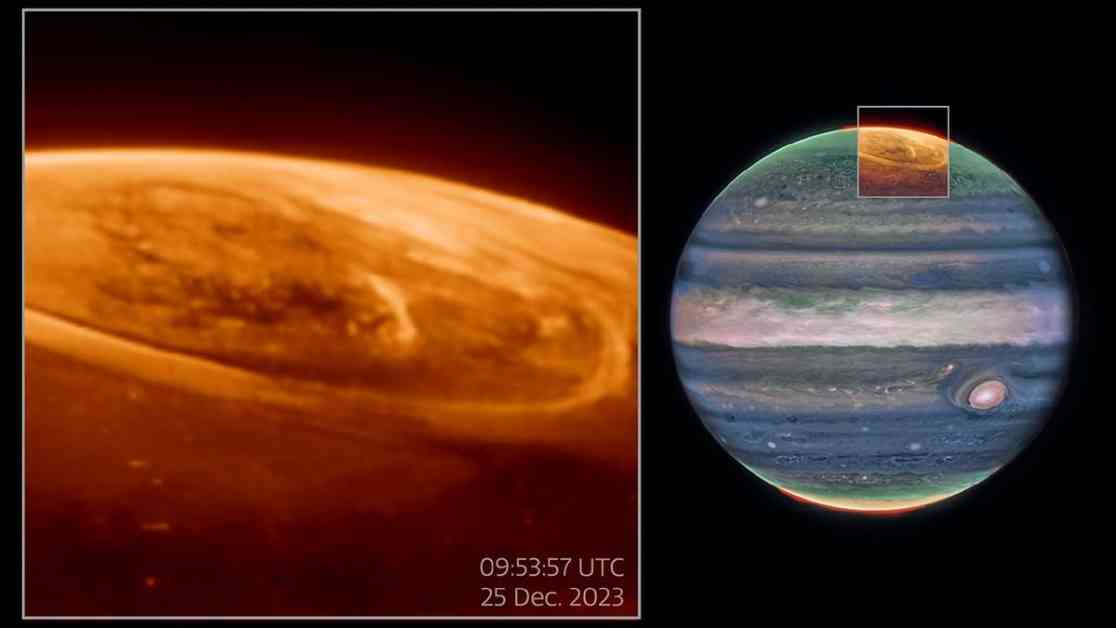On Christmas Day 2023, a group of scientists pointed the James Webb Space Telescope (JWST) at Jupiter and caught a spectacular light show of auroras on camera. The researchers used JWST’s infrared cameras to study the rapidly changing features of Jupiter’s immense auroras. The results of their observations could potentially shed light on how Jupiter’s atmosphere is heated and cooled. The study, published in Nature Communications on May 12, revealed some fascinating insights into the phenomenon.
The team, led by researcher Jonathan Nichols from the University of Leicester in the UK, was amazed by what they saw. “What a Christmas present it was — it just blew me away!” Nichols exclaimed. They had expected the auroras to fade in and out slowly over time, but instead, they witnessed the entire auroral region “fizzing and popping with light,” with variations occurring as quickly as within seconds. Auroras are created when high-energy charged particles collide with gases in a planet’s atmosphere, causing the gases to glow. Jupiter’s powerful magnetic field collects charged particles from sources like the sun and its volcanic moon Io, directing them towards the planet’s poles where they create a dazzling display that surpasses Earth’s Northern Lights by hundreds of times.
The researchers focused on studying the infrared emissions of the trihydrogen cation, H3+, which forms in Jupiter’s auroras when energetic electrons interact with hydrogen in the atmosphere. This molecule plays a role in both emitting heat out of Jupiter’s atmosphere and being destroyed by fast-moving electrons. Using JWST’s Near Infrared Camera, the team observed unexpected variations in H3+ emissions, indicating that the molecule lasts approximately two and a half minutes in Jupiter’s atmosphere before being destroyed. This finding could offer valuable insights into the cooling mechanisms of Jupiter’s atmosphere. However, further analysis is required as the researchers encountered puzzling discrepancies when comparing data from JWST with observations from the Hubble Space Telescope. Nichols expressed his confusion, stating, “Bizarrely, the brightest light observed by Webb had no real counterpart in Hubble’s pictures. This has left us scratching our heads. We still don’t understand how this happens.”
In future investigations, the team plans to delve deeper into the source of this unexpected pattern by utilizing additional data from JWST and observations from NASA’s Juno spacecraft, which has been studying Jupiter from orbit since 2016. The quest to unravel the mysteries of Jupiter’s auroras continues, with researchers eager to uncover the secrets hidden within the planet’s mesmerizing light shows.










